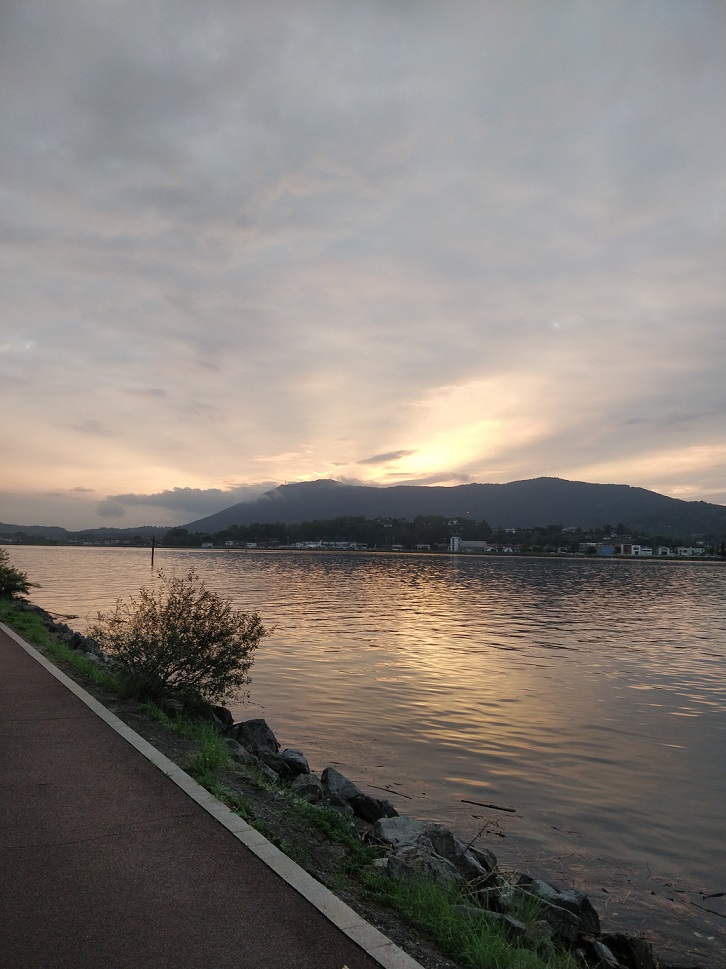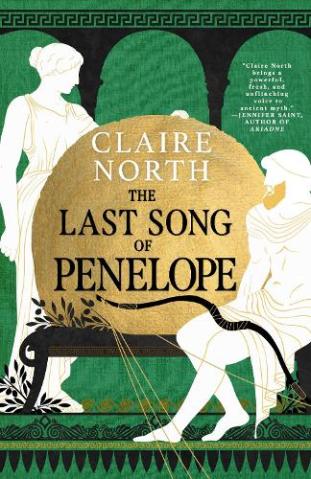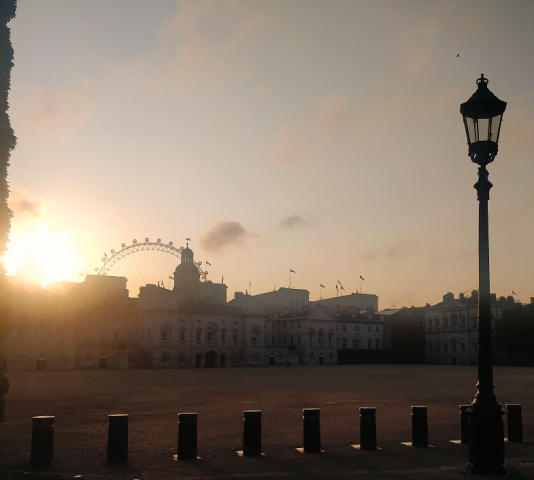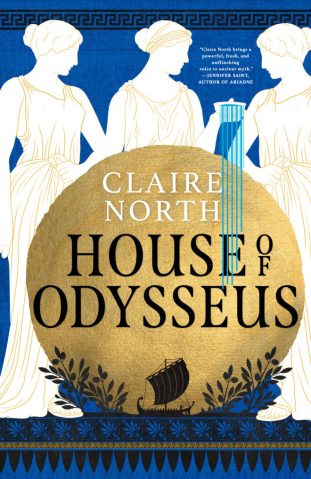Adventures to Hispacon 2022!

Last Tuesday my alarm went off at 5 a.m. to tell me to get my bum out of bed and down to St. Pancras station. It was a dark, chilly morning, but thankfully St. Pancras is easy to get to, and I was there a bit before 6 a.m. for check-in onto my 7.03 a.m. Eurostar train to Paris. This marked the beginning of a three-day journey across France and Spain to the town of Ferrol for Hispacon, not far from the Portuguese border in north-west Spain. And I’m gonna tell you about it… are you sitting comfortably…?
Let’s clear up the important thing: why in the name of all that’s holy would I take a train several thousand miles, when I could just fly? The answer is two-fold. Firstly, the train is a much bigger adventure, taking me to places I otherwise just wouldn’t visit. Secondly, I have the extraordinary privilege of having two great luxuries at my disposal – the resources to pay for accommodation along the way, and the time to take time.
This leads to my first vital disclaimer. If you are trying to hold down two jobs as your gas and electricity bills soar through the ceiling, and you’ve worked your arse off for that cheap short-haul flight to a holiday you desperately need – you do that. I am not here to shame people for flying to a much-needed break somewhere away from this craziness. The reality is that taking the train is a costlier option both in terms of cash (which I’ll come to) but critically in terms of time. I have the privilege to be able to put my money where my climate-talking mouth is, but it is a privilege. You do whatever you need to do to be ok, and that is absolutely fine.
Unless, that is, you’re one of the 1% who account for 20% of all British short-haul flights, let alone amongst the tiny minority with a private jet, in which case you absolutely have the resources to consider alternative means of transport that aren’t killing the planet. If you can afford to fly first-class every other week, you can 100% afford to take the train instead.
Back to the station…
The Eurostar to Paris takes a little over two hours, zipping through, let’s not kid ourselves, the mildly boring landscapes of Northern France at a break-neck pace. In Paris I had a little over two hours to make my connection to the TGV, which gave me time to walk from Gare du Nord to Montparnasse, about 5km across the city.
It’s a fabulous walk. The day was crisply cold and brilliantly bright, and the most direct route took me across the Seine, with views of both Notre Dame and the Eiffel Tower, and through the Louvre itself. It’s hard to wander across Paris and not hit something cool. It also took me through some extraordinarily chic streets, and for a while it felt like it’d be easier to buy an expensive handbag than a sandwich, although I did eventually stumble on a brie, walnut and fig baguette.
Montparnasse is a crowded station with sprawling halls that can feel a bit overwhelming as you try to work out where your train is. Thankfully the TGV departed from the hall I accidentally found myself in, and it was easy enough to stroll through the gates to my seat, having stocked up on snacks first.
I love the TGV, and I love a double-decker train. It feels incredibly luxurious to sit on the top deck, watching the world blast by outside. After hitting Bordeaux in around two hours, the TGV slowed down a bit as it pootled towards the Pyrenees. At Biarritz a thick fog began to descend from the steep green hills around the track, which only grew thicker as we trundled towards Hendaye and the border with Spain. From Hendaye it’s €2.50 to catch what is essentially a London Overground train – light commuter rail – across the thin river that separates France/Spain, towards San Sebastian.
San Sebastian is Basque country, and every sign was in at least two languages, if not three. Masks on Spanish trains are still compulsory, which I respected, though there was at least one couple who argued with the ticket inspector about this – you don’t have to speak Spanish to be able to understand a language of mildly privileged/conspiratorial belligerence.
I arrived in San Sebastian through winding gullies of blue-grey-grey in the late afternoon, and crossed the tracks to the slightly strange room I’d booked to stay the night. Within a giant, crumbling tower block – a lot of Spain is chipped and battered in a way that both gives it huge character and speaks of a complex history, and stands in contrast to the many immaculate French towns I’d passed through – was a hidden series of incredibly modernist rooms, with everything from check-in to check-out done in an impersonal series of digital interactions. Having dumped my bags, I went looking for food.
Spain does not believe in supper beginning until at least 8 p.m., which for a Brit is very confusing. San Sebastian’s beautiful central streets were full of a light hubbub of people having beers and maybe a small tostada with a tomato on it, but actual, meaningful food is a later thing, which would prove a source of some hunger in the days to come. Weaving through streets of surfers and visitors to the sea, I eventually found a place that would do me grubs, manned by a very nice lady who had not a word of English, and for whom my piddling Spanish was probably not gonna be enough. Thankfully, we both had enough German to communicate, marking the beginning of the linguistic squelch that was going to be a theme of the trip.
I ate in a park overlooking the sea, while a merry-go-round tinkled behind me and kids ran beneath the mist-shrouded palms, then wandered through foggy dusk slowly back to my hotel.
The next morning was the train from San Sebastian to Madrid. Spain has also structured its time differences to ensure maximum night in the evenings, presumable for the joy of late suppers and a civilized beer. This means that even at 8 a.m. in October, it’s dark, and so I ate my breakfast from a local cafe by the river while watching the sun creep up over the dark hills that overlook the city.
RENFE is the name of the Spanish rail network, and when the lovely organisers of Hispacon were helping me arrange this barmy trip, they warned me in advance that RENFE’s reputation was less than staggering. The trains are all a little creaky and noticeably slower than France’s zippy TGV or even some of the long-distance trains in the UK. They also have TV screens in every carriage showing films for your journey, and headphone jacks you can plug into like you’re on a plane. I half-watched a Clive Owen movie twice in the course of this trip, and Belfast once, as well a documentary about archaeological techniques. Mostly, however, I read. My local library’s e-lending service meant I had an entire reader of books to keep me entertained, and it was a pleasure to be able to stretch my legs out in the generous seating room you get on basically all trains, and the quiet of a hushed carriage.
I arrived at Madrid a little after lunch. On previous visits I’d stayed in Lavapies, a shabby-chic area full of history and beautiful winding streets. However to be near the station of my arrival, Chamartin, this time I was further north, in the much more sprawling, modern areas of Madrid that mingled apartment blocks and soulless offices around big roundabouts and hidden backstreets. Even at its most Euro-sprawly, however, it still felt vibrant and full of life, and having deposited my bags at the hostel where I was staying, I went for a lovely walk through a hot summer afternoon on a quest for cake and new roads travelled.
There is a marked different between the big avenues of Madrid – loud, clogged with traffic – and even just a few backstreets behind them, where everything is tables outside cafes and bars, kids and parks and life. It has very little of Paris’ almost unobtainable sense of chic, and significant variety in even just an hour of walking. I would happily have spent more than a long, lazy afternoon there – but there was a convention to get to…
After a surprisingly comfortable night in a woman’s dorm, it was a slow breakfast in a cafe across the street followed by a wander back up to the train station for the next leg of the journey. Bags were scanned as though at an airport when boarding the long-distance trains, though the staff didn’t seem entirely interested in the outcome, and the whole thing added less than 60 seconds to the process of getting to the platform.
Madrid to A Coruña is a slightly shorter journey than San Sebastian to Madrid. The landscape around the capital city is yellow, and oddly desolate. There’s scarring from some recent fires in a few places, and the towns that emerge from the flatlands rise and fall into emptiness as you pass. Thankfully when you hit the foothills of Galicia, the world becomes a series of dark-green/grey contours, plastered with trees – and hell, if you don’t enjoy the view there’s always that Clive Owen film you can watch.
At A Coruña I was fortunate enough to meet up with other writers and organisers travelling to Ferrol, and Hispacon had arranged a lift to see us the last part of the way, arriving in Ferrol in time to go looking for churros – because of course I went looking for churros – and to realise that yes, but absolutely yes, you’re not getting supper before 8 p.m..
The next few days were a joy of meeting lovely people and attending lovely events. The organising team at Hispacon were all incredibly lovely and hard-working. Especial thanks need to go to Blanca, Eva and Gabi, who had the unenviable task of trying to translate my sometimes mischievous (sorry) English colloquial into Spanish, as well as Clara for teaching me Japanese chess in the excellent gaming area, and Isa-Janis for helping organise the Spanish travel.
Ferrol is a military town, with an extensive naval arsenal that’s still in use. Architecturally it’s a mish-mash of 1700s crumbling mansion and churchs, as well as a few old buildings that have been beautifully restored, such as the centres where the convention was happening. Then there’s more modern apartment blocks jammed into the gaps, resulting in a jumble of styles and decisions that feel like you’re moving through architectural stratum just by wandering down the main street. On the first day of the convention, the organisers kindly took us on a boat ride out to a nearby naval fort, and we saw a pod of dolphins in the bay.
Having reached Ferrol, a pause, to talk about cost and climate. If you’re not interested in this, you can skip ahead to the return journey….
Climate
A flight from London – A Coruña emits about 0.45 tonnes of CO2 . To put that into context, a citizen in Zambia has average annual CO2 emissions of on average 0.23 tonnes, a citizen of China around 4.58 tonnes, a German citizen around 10 tonnes (which is roughly what we need people to be at in 2030 in order to be ok in the future – climate action doesn’t mean grim choices, it just means living sustainably and comfortably within our budgets!) and an American around 20 tonnes of CO2 per year.
The same journey by train emits 0.007 tonnes of CO2. Meaning I could travel significant distances across Europe and barely dent my carbon budget. As we get better at generating renewable power, that figure becomes even less significant – the ambition is to get to a place where rail networks are not merely fast and effective, but are also run entirely on green electricity, which is frankly a vision of the future I can get behind.
From a climate point of view, therefore, taking a train is a huge, huge saving in terms of cost to the planet – as well as an adventure.
This isn’t to say it’s the solution for everything. I will not, for example, be taking the train to Japan any time soon. It’s a myth about climate that you’ll never be able to do anything extravagant – a long-haul flight every now and then is absolutely fine, so long as we balance it with other choices, such as perhaps fewer short-haul flights where the train is an option. So if you’re about to take the plane to New York – go for it. But maybe when you’ve next got to go London-Edinburgh, rather than spend two hours at the airport and 45 minutes in the air, just take the train. It’s only an extra hour and a bit longer than what you’ve already had to spend wading through airport security and sitting with your knees crammed up against your chin, and much, much nicer.
Cost
Taking the train is more expensive than taking the plane.
At the time of looking, it was about £180 for the flights Heathrow-A Coruña, and outside summer you have to change planes in Madrid. I suspect you can find even cheaper options than that if you’re booking further in advance, so long as you don’t mind the inevitable final screen where it turns out your budget carrier failed to factor in a charge for tax, baggage and oxygen etc..
The total for the railway fares was about £380, of which £200 was Eurostar/TGV, and £180 Spanish trains. Again, there were ways to do this more cheaply. A Eurorail pass is an absolute bargain and could perhaps have knocked £100 off this with some canny planning. You can also find cheaper services than I did – but because RENFE doesn’t release its bookings as early as TGV/Eurostar, we ended up booking a little later and more haphazardly than I usually would, to compensate for the giant ??? that was the Spanish railway timetable.
There’s also the cost of accommodation. My cheapest was £30 for the really quite nice dorm in Madird; most expensive around £60 in Hendaye. Again, I could have made more savings here if we’d booked earlier, but see above how the Spanish railway timetables were a big ??? hanging over this process. However, I’m not going to delve too deeply into accommodation costs here, because frankly, they were the part of this equation that turns the trip from a slog, into an adventure.
It’s also worth saying: governments massively subsidize air travel. Policy decisions could change this mathematics. As well as reducing government support, a carbon tax on frequent flyers is an interesting and obvious solution, ensuring that the tiny minority of people who are doing most of the flying have to pay more for the privilege, while allowing people who just want to have their one holiday a year that they’ve worked so hard for to still be able to do it affordably. Nationalising the railways is also another good shout; if the experience of the last few years is anything to go by in the UK, it’s very obvious that private companies are only interested in shareholder profit, and that we are more than capable of taking services back into public hands and that just working out better.
Other Options
I did look at taking the ferry from Portsmouth to Bilbao, or Plymouth to Santander. It would have saved me a couple of nights of accommodation, as I would have slept on the ferry, but unfortunately the sailings didn’t work out, and the Bilbao service wouldn’t let me book unless I was travelling with a vehicle. Once in Spain, the trains would still have been very difficult. Decades of dictatorship have resulted in a network that is almost entirely about lines running through Madrid, and as a result the only direct train from Santander to Ferrol takes over 11 hours, and it still would have been faster to go via the capital. However, if you’re not bound by my time constrictions, sailing is an option.
On this theme, sleeper trains are fantastic. They’re often very reasonably priced if you book early enough, and also save you the price of one night’s accommodation. I’ve personally done the following, though I believe these days the sleepers go from Paris rather than Calais:
- London-Penzance
- Brussels-Berlin
- Brussels-Vienna
- Calais-Rome
- Calais-Bologna
And I’m looking at the Paris-Munich service as an adventure I’d like to try in the future.
Unfortunately, there are no sleeper trains that served my purpose in Spain. The reality is that the Spanish network is probably one of the hardest networks to crack in Europe, with slow services and often only one train a day in and out of your destination, forcing you into a timetable that might not be what you want. Whereas trains across Germany are absolutely fantastic, and even the UK based sleeper I’ve tried to Cornwall was a comfortable, easy and brilliantly cheap experience. (The sleeper was in fact cheaper than a day ticket.)
It’s also worth saying that there are services from Paris-Barcelona that are by all reports, incredibly quick and comfortable, albeit no sleeper yet as far as I’m aware. But if you are looking to have your own rail adventure, may I heartily recommend to you a) the Eurorail pass and b) starting on the French or German rail networks, as they’re flipping great.
And also, I will concede, that though it’s often hideously over-priced, Spanish trains have really taught me to love and value the British rail network, which we need to protect with everything we have. It is a privilege to be able to travel so far by train.
… back to the adventure!
After four days in Ferrol, it was time to leave again. Once again we were given a lift to A Coruña, with time to grab, of course, churros before the train to Madrid. This time I was staying in a not-particularly-nice business hotel near a motorway, and as I arrived, the skies opened in a torrential downpour.
I just about managed to scurry to the nearest Carrefour to find grubs, before slopping back to my room in wet shoes. I regret not having better waterproofs with which to explore the suburb I was in – it felt modern and leafy and different from what I expected, and in the rain smelt of pine needles – but did I mention how wet my shoes were?
My train the following morning left as the sun came up, arriving in San Sebastian just after lunch. There I stayed on the platform for the short connection to Irun, which borders France. Being in no hurry, I walked the half hour from Irun station down to the border, rather than take the local metro, and sauntered across the short bridge from Spain to France with the casualness of someone out to buy a pint of milk. It felt surreal – and wonderful.
My overnight room on the French side of the border had views across the estuary to Spain, and having dumped my bag I went for a walk through the town of Hendaye. By this point I was suffering total linguistic meltdown, having had enough time in Ferrol to begin to internalise some Spanish, only to get incredibly tongue-tied when trying to switch back to French. Never-the-less, I managed to get grubs and sat by a huge sandy beach on the northern tip of the town, watching surfers ride the waves. The pounding of the water and the salt in the air was incredibly relaxing, and I had possibly one of the calmest, most relaxing evening of the whole trip wandering around the coast and up the estuary as the sky changed from blue to golden pinks and purples at sunset. On the way I was passed by runners doing one of the coolest loops it must be possible to do – a jog from Spanish Irun to an upriver bridge, over into France, along the estuary to the downriver bridge at Hendaye, and back into Spain. I love me a nice running route; I’ve never planned one that casually crosses international borders before.
From the French side of the water, I could hear the Spanish rowing club calling out to each other as the sun went down above the mountains beyond, and it was with a mild sense of regret that I pulled myself away from the bench where I’d settled to bed.
The morning TGV to Paris was as easy as ever. Once again I had two hours to make my connection from Montparnasse to Gare du Nord, but given that I also had to check in at customs, I took the Metro rather than walk. Finding Metro 4 at Montparnasse it felt like I could have walked to Gare du Nord anyway, but once on it was quick and efficient and comfortable to my destination. I checked in at Eurostar with my mix of British/German passports (German conventions!! Call me!!!) and a bit over two hours later, was back at St. Pancras where this journey all began, exhausted and elated by the trip.
Last Thoughts…
So I had an adventure. I did it fuelled by a sense of “ooooh let’s go there!”, a love of trains and a desire to reduce my climate footprint.
But wait, you might say! Cat/Claire/whoever you are! Your actions are, in the grand scheme of climate change, insignificant! You saved a fraction of a second’s worth of the CO2 emissions of the human race, so why bother?
To which I say: yes. You are correct.
And that’s why I’m talking about this here. All the climatarian diets and shampoo bars and bicycles-not-cars and LED bulbs in your life are tiny next to the world’s output. But they are also where we as a whole species need to get to. Every single one. And by you – yes you – making these choices and leading the way, and communicating about it – you are not only showing how easy, if not actively enjoyable it can be to make these changes – but you are spreading these ideas to your community. By you making these changes and showing to your friends and loved ones how simple it is, you are encouraging them. And they will then encourage others, who encourage others and so on and so forth until your individual action is nothing of the sort. It is the beginning of the massed collective action that only happens when we take responsibility for acting. When we change as individuals, and express that to our communities. Our individual actions are the single strongest proof against every negative assumption about climate action – that it’s too hard, too grim, too impossible. You – yes you – are the proof that it’s not.
A lot of the time, when talking about climate, we look to heroes. We feel powerless, because we feel we need to be heroic, but feel crushed by this world into a tiny box where we can’t act, can’t make a difference.
But when Martin Luther King Jnr. marched on Washington, if 250,000 people hadn’t marched with him, no one would have given a shit. We do not know the names of every one of the people who listened to him speak; we do not know their stories. We do not know the names of the millions who marched for the right of women to vote, or for civil liberties. We do not celebrate the simple act of turning up. But it was them – it was the great mass of the unnamed people who chose to show up, who made the difference.
You don’t have to be a hero. You don’t have to solve everything. Being one of the unnamed millions who showed up, when they could, in whatever way they could – that’s the most important thing in the world.
And you can have a hella fun time while doing it.






